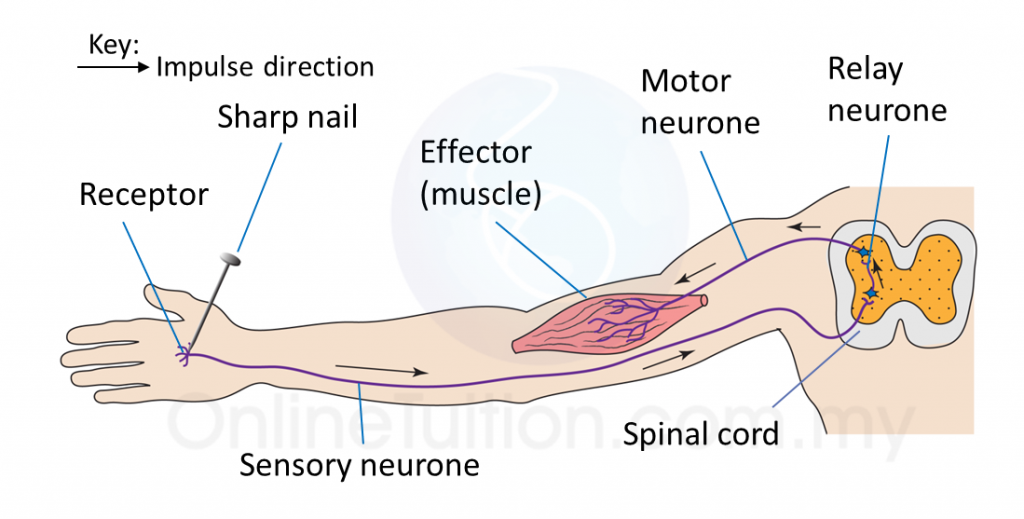2.3 Nervous Coordination
- A stimulus is any change which occurs outside or inside the human body that brings about a response.
- A receptor is a cell in the sensory organ which detects stimulus and convert the stimulus into electrical impulses.
- There are five main types of sensory organs, the eyes, ears, tongue, nose and skin.
- The reaction to a stimulus is called response.
- A response may be in the form of movement, caused by muscles or in the form of secretions, produced by glands.
- Muscles and glands which respond to stimuli are called effectors.
- All receptors and effectors are connected to the nervous system by neurones.
Reflex actions
- A reflex action is a fast, automatic and involuntary response towards a stimulus. It is carried out without conscious by the brain.
- Reflex actions help us to survive and to protect us from dangerous situation. For example, jerking away of hand when in contact with a hot kettle.
- Reflex actions take place in the spinal cord.
- The path of reflex action is called a reflex arc.
Flow chart showing reflex action occurring through the spinal cord

Example of reflex action when hand is pricked by a sharp nail

